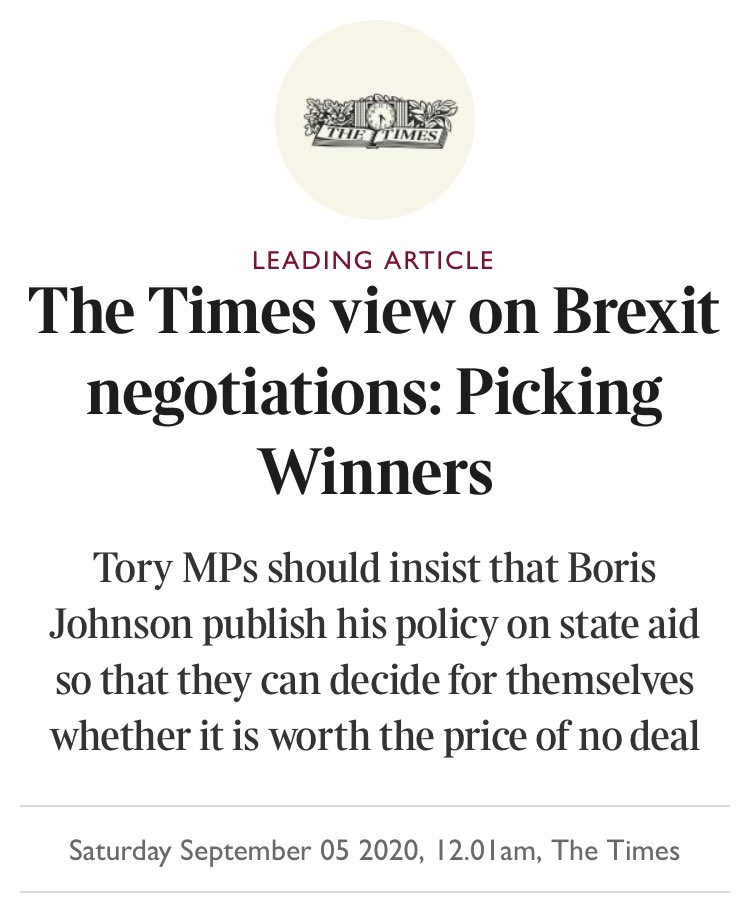The Times is right - Boris Johnson needs to outline his plans for a UK State aid regime.
The reason isn’t simply to unlock EU trade talks (although that’s important).
It is about what kind of country the UK plans to be in future.
thetimes.co.uk/article/the-ti…
The reason isn’t simply to unlock EU trade talks (although that’s important).
It is about what kind of country the UK plans to be in future.
thetimes.co.uk/article/the-ti…

It’s laudable that the UK proposes to become a champion of rules based free trade around the World.
However our credibility depends upon leading by example.
Therefore we should be creating the best possible competition law regime, not dismantling it.
uksala.org/the-future-of-…
However our credibility depends upon leading by example.
Therefore we should be creating the best possible competition law regime, not dismantling it.
uksala.org/the-future-of-…

@OdysseanProject is fizzing with ideas about how to turn the UK into an innovation powerhouse.
Although realising these objectives is possible under EU State aid rules, creating a UK State aid regime is an opportunity to imbed these ideas within the subsidy award process.
Although realising these objectives is possible under EU State aid rules, creating a UK State aid regime is an opportunity to imbed these ideas within the subsidy award process.
Block exemptions are used for over 95% of all State aid awards.
The EU uses some economic data when designing block exemptions.
The UK could put data at the heart of the process to ensure subsidies are directed towards the most productive activities.
The EU uses some economic data when designing block exemptions.
The UK could put data at the heart of the process to ensure subsidies are directed towards the most productive activities.
The State aid rules help protect public money.
For example, under State aid law information about awards of public funding is published, rather than being kept secret. This helps avoid #cronyism.
It’s important to keep such rules in a UK State aid regime.
For example, under State aid law information about awards of public funding is published, rather than being kept secret. This helps avoid #cronyism.
It’s important to keep such rules in a UK State aid regime.
There are strong reasons for the UK to establish robust and effective State aid rules.
Therefore the Times is right to point out that the UK has taken an inconsistent position on this issue during negotiations & to call upon Boris Johnson to stop prevaricating.
/End

Therefore the Times is right to point out that the UK has taken an inconsistent position on this issue during negotiations & to call upon Boris Johnson to stop prevaricating.
/End


• • •
Missing some Tweet in this thread? You can try to
force a refresh























